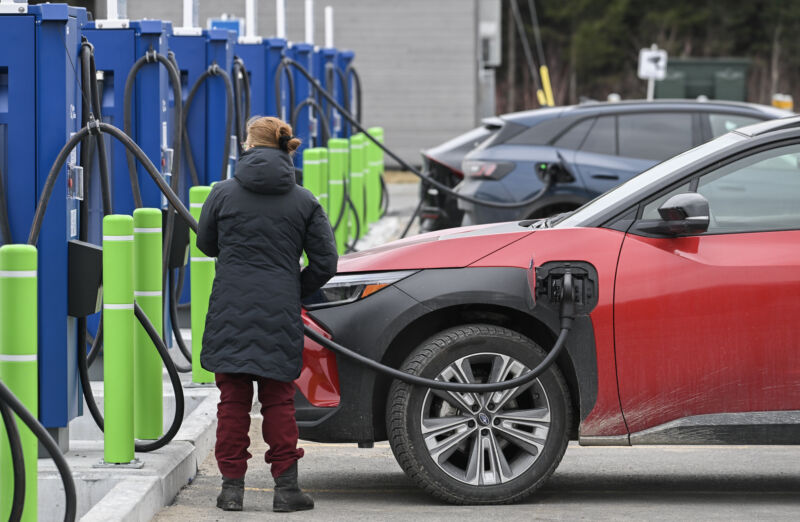
Graham Hughes/Bloomberg via Getty Images
Modern life can be fraught with confusion. Should I answer my cellphone in a crowded place? (No.) Where do I stand on an escalator? (On the right—let people walk on the left.) And what are the social rules when it comes to recharging my electric vehicle? Thankfully, that last question has now been addressed by Debrett’s, a British publisher with a name now synonymous with etiquette, in the recently published 2024 edition of “A-Z of Modern Manners.”
Debrett’s has been publishing guides on manners and etiquette since the last time electric vehicles were a thing, but it first put together a list of dos and do-nots for EV drivers last year as a standalone guide with British car brand Vauxhall. Now, it has added the advice to this year’s edition of the general etiquette guide.
Although Debrett’s is writing for a UK audience, with its ingrained ideas about class structure, the advice also applies to this side of the Atlantic, and it’s probably timely now that Tesla is opening up its Supercharger network to non-Tesla EVs. Here is some of the advice.
Don’t cut in line
As EV adoption grows, particularly in places like California, some charging locations can generate demand that outstrips the number of charging plugs available. If every charger at a station is occupied, see if there’s a queue you’re supposed to join—being unaware and jumping in front of other drivers who have been waiting longer than you won’t make a good impression.
If you find yourself waiting with other EV drivers, make small talk to pass the time. “If you establish a relationship with fellow motorists, they’re much more likely to be accommodating when it comes to negotiating charging time,” the guide notes.
Debrett’s also suggests you park neatly within the lines and don’t straddle spaces. This may be less of a problem in the US, where we make our bays big, but remember that “no electric vehicle has special priority, whether that be a full EV or Plug-in Hybrid (PHEV).”
Know something about your EV
Being aware of your car’s charging needs is important. For example, PHEV drivers have no need for DC fast chargers unless they are in a CHAdeMO-equipped Mitsubishi Outlander, so don’t take your AC-only vehicle to a DC-only location.
And for EV drivers at DC fast chargers, you should know how long it takes your car to reach an 80 percent state of charge. After this point, an EV battery significantly restricts the amount of charge it draws, throttling back the charger in the process. Charging from 80 to 100 percent can take as long as 10 to 80 percent takes, so plan on leaving the public charger at that point unless absolutely necessary.
Be polite
While you shouldn’t jump the queue, Debrett’s says it’s OK to discreetly check how long another car has left in its session. If you see it’s almost done and that a driver is with that car, you can politely ask how much longer they’re going to take. For example: “I hope you don’t mind me asking, but I notice you’re nearly fully charged. Would it be okay if I started to plug in soon?” And remember to be thankful if they say yes.









